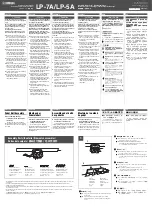
© Jeds Peds
Mewtron
Pag
e
10
Capacitors
Capacitors come in many shapes and sizes but fall into two basic camps. Polarised or non polarised.
Capacitors can store energy. For a really good explanation of how they work try this video starting
at 4:25.
This kit uses some non polarised capacitors. The good news is that just like resistors you can insert
them into the PCB either way round.
Now the bad news. they come in a variety of shapes and sizes and although there are supposed to
be standards for markings they do vary. So, what do they look like? This kit predominantly contains
box caps, like this one.
Now, the marking. Capacitance is measured in Farads (f). 1f is a huge
capacitor. Going down in order there are Millifarads, mf (rarely used) 1
mf is 1/1000th of 1f. Microfarads uf 1/1000th of 1mf. Nanofarads nf
1/1000th of 1uf and Picofarads 1/1000th of 1nf.
Another way to put it is that there are 1000pf in 1nf and 1000nf in 1uf.
Polyester box capacitors with values of 1nf but less than 100nf will have
the value written on the top, either in a very obvious way, or a code.
The capacitor shown above has a value of 100nf. A 1uf capacitor would begin with 1***, value of
1000, so with the additional decimal point, .1k is 100nf. The K is the tolerance (10%) and 63 is the
max voltage. Manufacturers do have other ways of indicating values though unfortunately.
Where things can get difficult is with poly boxes of 100nf and above. sometimes you will see a 100nf
marked as 104xxxx ie the picofarad notation has been used for the value. Equally you may see .1xxxx
ie 0.1uf (the
x’s
denote the tolerance and voltage). It is still the same 100nf capacitor. The reason
for this is that only 3 digits can be used for the value so 100n cannot be used and 100 would denote
100pf. Still with me? this continues for high values until we get to 1uf which will be marked as
1uxxxx.
Sometimes I supply 1UF MLCC style capacitors marked as 105. These are a small yellow bead. The
different styles of non polarised caps are all interchangeable so do not worry if you expect a box cap
and get a MLCC or vice versa.
Eventually these capacitor and resistor codes will start to sink in! Trust me.
Now onto polarised, they are the simplest. The most common that you
will see are
‘electrolytic’
capacitors. These look like a small beer can
with two protruding wires, usually from the same end, sometimes one
from each end. on the outside of the can will be the value and the max
voltage. Polarised capacitors can only be inserted into the board in one
direction. The PCB will have a + next to the positive terminal.










































